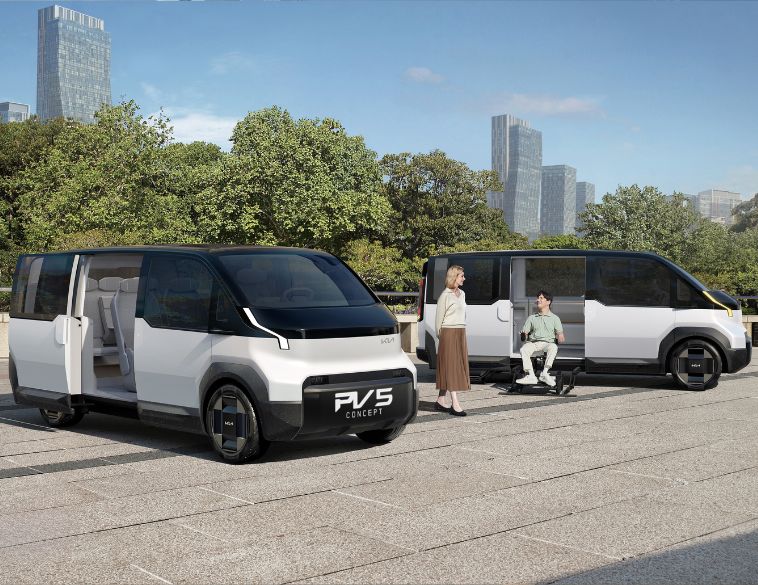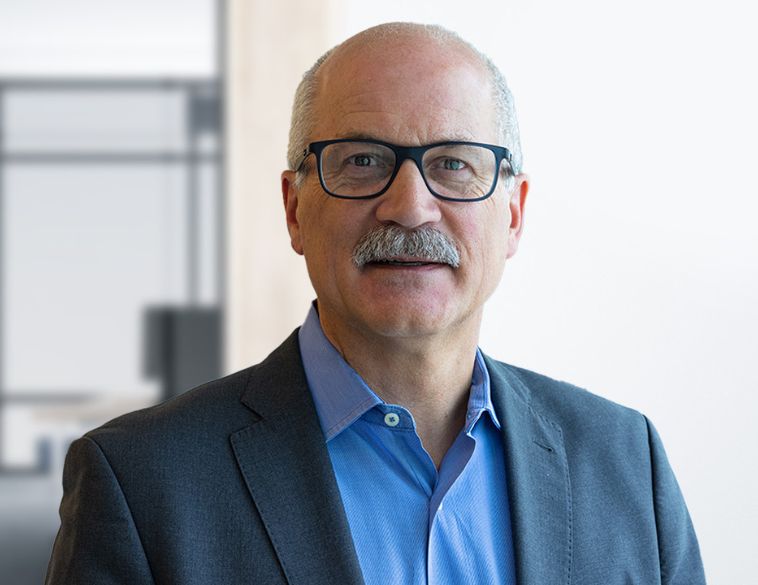It’s no coincidence that Kia took advantage of the technology showcase that is the Consumer Electronics Show (CES) in Las Vegas in January to present its new PBV platform for electric vehicles, aimed primarily at commercial applications.
The Korean manufacturer’s vision with the PBV family of vehicles is to offer a flexible and scalable mobility solution. The PBV, which stands for Platform Beyond Vehicle, will cover three adaptable models, the PV5, PV7 and PV1.
These fully electric vehicles, currently in prototype form, will be produced and marketed in three successive phases.
Production of the PV5 will be launched first in 2025 in South Korea, with exports to world markets, including North America, from 2026. The plant will be able to assemble 150,000 vehicles in its first year, a rate that could double thereafter.
The Kia PV5 will target commercial delivery fleets and passenger transport. The modular concept of its construction will enable various versions to be assembled at the factory on the same platform, with the clear aim of reducing production costs.
A minivan, a high-roof minivan, a pickup version (currently focused on the Asian market) and a passenger version will all be produced at the same plant, which is currently being prepared in Korea.
The price of the base model is estimated at $35,000 USD.
Successive phases over the next few years will see the gradual introduction of the PV7, a larger version of the PV5, followed by the PV1, a small urban vehicle. Technological advances over the next few years could see the following two platforms evolve, making it easier for them to interact or even operate autonomously.

An interesting solution for Canada
“I’m convinced that our modular and flexible approach will make a big difference in Canada,” says Elias El-Achhab, Chief Operating Officer and Vice President of Kia Canada. “Companies will be able to buy the PV5 with the configuration of their choice. It can then add the equipment it wants, taking advantage of the low floor and standardised anchoring points.”
The first version of the PV5 will be offered with three choices of battery packs, up to a possible 800 volts. Autonomy has not yet been specified.
The charging solution designed by Kia will aim to optimise charging programmes for maximum efficiency. It takes into account the battery charge level, routes, timetables and breaks. In addition, Kia intends to offer a total energy solution based on an advanced recharging infrastructure. To achieve this, the brand will be able to draw on innovations such as V2X (Vehicle-to-Everything) technology.

A convertible vehicle
Being modular, the PV5 could be transformed during its career. The rear compartment is assembled without welding. In a subsequent phase, it could be possible to upgrade from a delivery van to a taxi simply by replacing the rear module.
Using “Easy Swap” technology, a single vehicle chassis can be used to meet multiple mobility needs. Behind the cab or ‘driver’s area’, which contains fixed components, a whole series of interchangeable upper bodies can be connected to the vehicle chassis by means of a hybrid coupling system that is both mechanical and electromagnetic.
“Kia dealers who deliver to commercial fleets will be trained,” says El-Achhab. “What’s interesting is that we’ll be able to change the vehicle’s functions easily and offer an easily convertible electric commercial vehicle for resale when the time comes.”
Working with customers
In Canada, the first vehicle in the PBV family will be introduced in collaboration with existing Kia customers. The product will be available to consumers, but commercial parks will be the first to be approached.
“First of all, we’re going to work with our customers,” explains the CEO. “There will be incentives for fleet managers. What’s important for us, with this evolving vehicle, is to hear their comments so that we can adjust the offer. The basis of the GVW platform is to adapt our vehicle to our customers’ needs from the outset, reducing fitting costs.”

Intelligent management tools
At CES, Kia was talking about much more than just the vehicles it wants to bring to market. The manufacturer is also promoting its remote communications and management solutions.
In practical application, optimised data connectivity between vehicles and external data (for service provision routes or delivery routes, for example) will make it easy to manage a large number of vehicles in the form of a software-defined fleet. As the technology associated with this programme develops, increasingly autonomous vehicles will be able to interact with each other.
For example, PV5 could ultimately transfer part of its load autonomously to the smaller PV1 for final delivery to the customer in an urban area.
Kia’s dedicated fleet management solution for GVWs will enable customers to manage multiple vehicles. It provides data on sales, stocks and deliveries, which is a real asset for mobility and logistics companies.
Among the functions that will be available are stock tracking, temperature control and intelligent route planning. According to Kia, this solution helps to streamline fleet management, using real-time data and AI integration to ensure preventive maintenance, for example, to deliver optimum operational efficiency.

A concern for total cost of ownership
“We pay a great deal of attention to the reparability of this range of vehicles,” says El-Achhab. “For example, we’re looking at ways of simplifying the repair of a front bumper without having to replace all the parts that are hidden behind it, the replacement of which increases the cost of repair. In developing the PBV platform, we are keeping in mind the importance for fleet managers of controlling the total cost of ownership (TCO).”
For El-Achhab, the transition of Canadian fleets to green solutions must also be supported by financial considerations.
“The GVWs will be a real vector for innovation within our company, which will be able to draw on its customer-centric management system, its expertise in the mass production of EVs, the rapid development of Hyundai Motor Group’s SDx strategy and its future related activities,” concluded HoSung SONG, President and CEO of Kia Corporation at a press briefing at CES.



